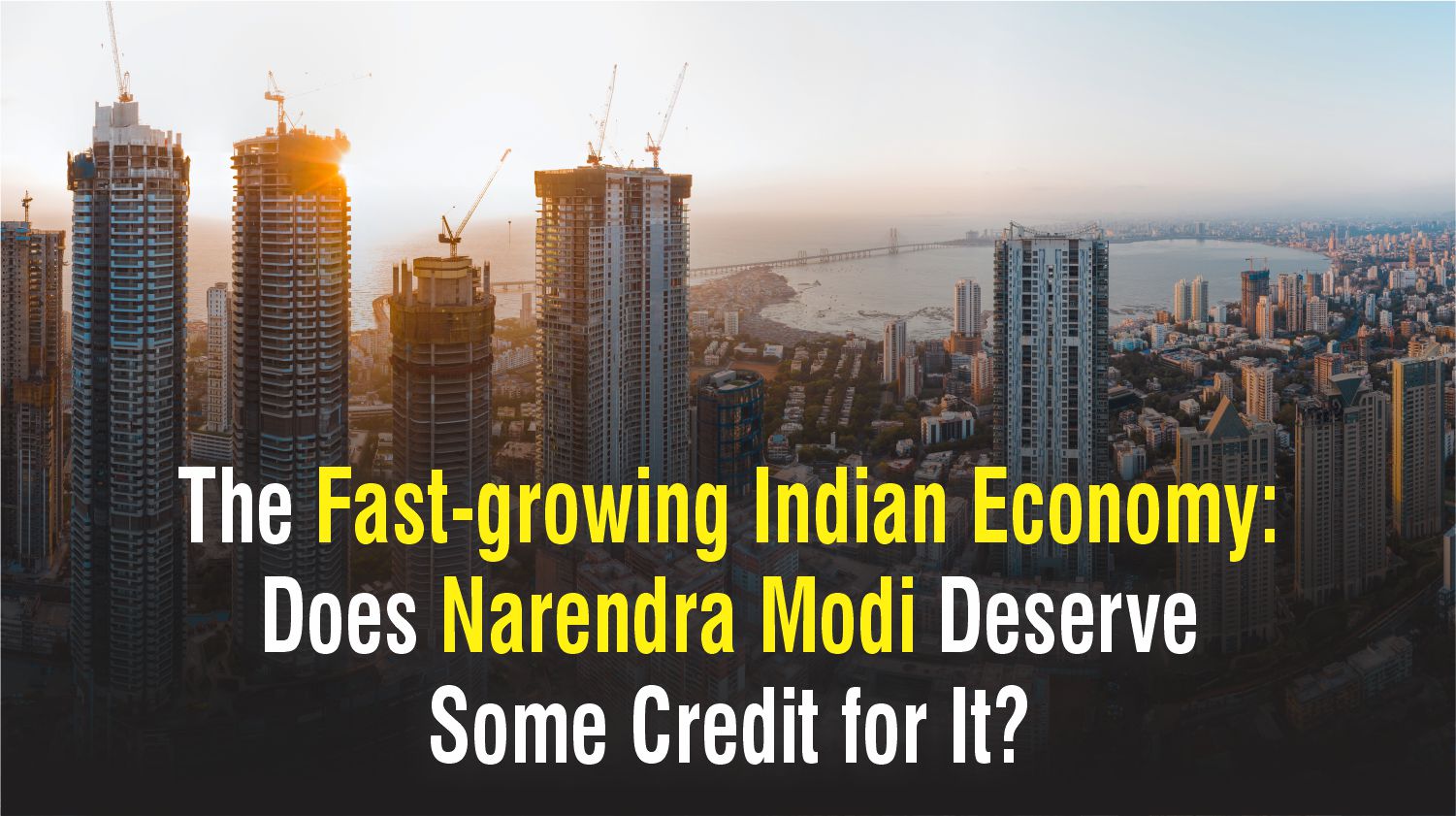Home
-
Blogs on General Management
-
The Fast-growing Indian Economy: Does Narendra Modi Deserve Some Credit for It?

The Fast-growing Indian Economy: Does Narendra Modi Deserve Some Credit for It?
by Vibrant Publishers
It is on record that the Indian economy grew exponentially under Prime Minister Narendra Modi’s leadership despite the debilitating effects of the COVID-19 pandemic that had slowed down many world economies, including that of the United States, China, and Japan. In 2023, India’s GDP expanded by 6.4% while China’s GDP only grew marginally at 5.4% and the United States’ GDP increased by 4.9%.
6 Facts that indicate that the Indian economy is doing well under Prime Minister Modi
At the current rate of growth, India is projected to surpass Japan as the third-largest economy in the world by 2030. The recent progress recorded in the Indian economy is linked to the following socio-economic advancements recorded under the able leadership of Narendra Modi:
1. Moderate Inflation: The inflation rate in 2013, just before Narendra Modi took off as the Prime Minister was estimated at 9.13 (with the 5-year average topping 10.38). However, he has been able to dramatically bring India’s inflation down to as low as 4.45 (October 2023). With a moderate inflation rate, the purchasing power of an average Indian household has consequently increased.
2. Stable Interest Rate Regime: India’s interest rate regime is relatively stable; it indicates that its interest rate is not affected by any ups and downs in the open markets. In case a nation’s interest rate is market-driven, there are some obvious disadvantages of having a “floating” interest rate: Indian businesses and the government borrowing money from foreign investors have to pay more when the interest rate goes up and it also affects the prices of real estate property; houses may appear unaffordable to most earners except the super-rich.
3. Robust Foreign Exchange Reserves: Since India learned a great lesson from the 1991 near-apocalyptic Balance of Payment (BoP) deficit that made it impossible for the government and Indian businesses to import necessities from overseas, the story has changed for the better. As of October 2023, the Reserve Bank of India reported that India’s foreign exchange reserves stood at $586.111 billion. This allows Indian businesses to import the raw materials they require from other nations without necessarily worrying about the government not allowing them to pay in dollar denomination.
4. Increased Foreign Direct Investments (FDIs): Over the past three to five years, India has witnessed an unprecedented increase in the number of Foreign Direct Investments (FDIs) flocking into the country. In 2013, before Narendra Modi assumed leadership, India had received about $34.3 billion in FDIs. Surprisingly, in 2022, that amount is more than doubled to $84.8 billion. This is largely due to the Modi government’s efforts at liberalizing the Indian economy which is now more market-driven and transparent for international investors to bring their funds to jumpstart diverse aspects of the Indian economy.
5. Vibrant Local Startup Ecosystem: India’s startup ecosystem is one of the biggest in the Asian subcontinent, with a total of 61,400 startup companies in operation in the country. The good news is that Indian startups are increasingly hiring more and more professionals than some of the traditional businesses, and they have received foreign investments that are worth about $70 billion between 2014 and 2020.
6. Superb Leadership: What has made all the above-mentioned socio-economic advancements possible is the indefatigable leadership of Prime Minister Narendra Modi. He has worked laboriously to reform several areas of the Indian economy, from initiating and implementing widespread reforms in banking, education, taxation, farming, trade, healthcare, and other sectors. India has repositioned itself as a nation that is open and willing to do business with other countries. This wasn’t always the case when the Indian economy was purely self-focused and embraced little international trade. What the Prime Minister has achieved is the liberalization of most industries to allow and encourage foreign investment.
India’s Road to Transformation: Why Leadership Matters, a book written by Dr. Jagdish Sheth and Gyanendra Singh, two US-based Indian academics who dream of a better and more advanced India, sheds more light on their beloved country’s current rate of growth and the challenges it has to overcome to fully transform as an economic powerhouse.
Front cover of India’s Road To Transformation: Why Leadership Matters book
Does India have what it takes to become a superpower in the likes of the United States and China in the next 7-10 years? The authors of India’s Road to Transformation: Why Leadership Matters convincingly think that it does, but with a caveat that Indian people must encourage and support a transformational leader to get the job done.
Who among the crop of modern-day Indian leaders does the cap of a transformational leader fit? After making some critical analyses, the authors believe that Narendra Modi, judging by his actions and performance to date, is worth being trusted with Indian leadership for another term.
To discover how they arrived at this very important conclusion, read the entire book yourself and make your own judgment about the undeniable facts highlighted in India’s Road to Transformation: Why Leadership Matters.
About the Authors
Dr. Jagdish Sheth is Charles H. Kellstadt Professor of Business at the Goizueta Business School at Emory University and is globally known for his scholarly contributions to consumer behavior, relationship marketing, competitive strategy, and geopolitical analysis. Dr. Sheth has been on the board of several companies including Norstan, Pacwest-Telecom, Cryocell International, Shasun Drugs and Chemicals, and WIPRO Limited. He is the Founder and Chairman of the Academy of Indian Marketing (AIM) which supports research and scholarship among Indian scholars in marketing and management.
Gyanendra Singh is a former P&G executive, Managing Partner at The Partnering Group, and Director of the Center for Retail Management at the Kellogg School of Management. His initial career in R&D led to two patents and new products. This was followed by a marketing and management systems career, during which his strategic insights led to many concepts of Category Management. He has authored many articles and books and advised multinationals across the globe— from Argentina to Russia. Subsequently, his work has focused on change management within large organizations, including national transformation.
Share












